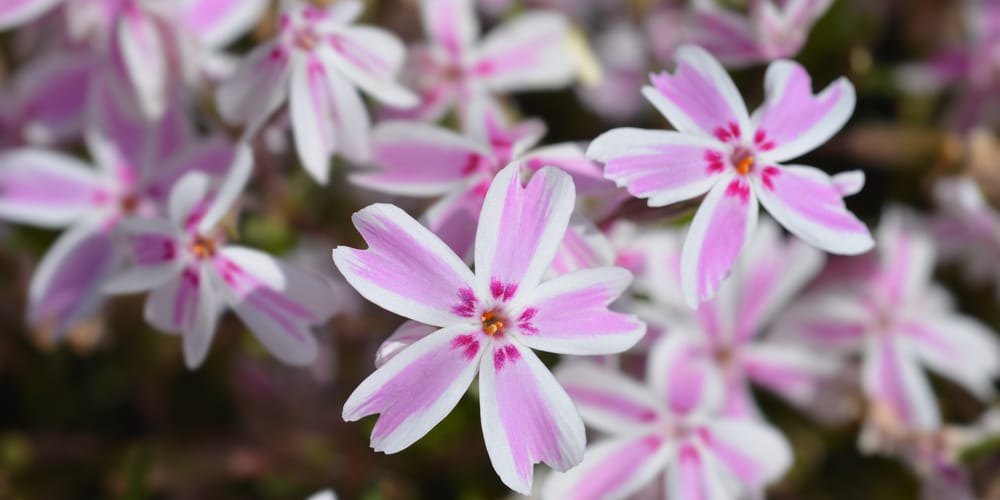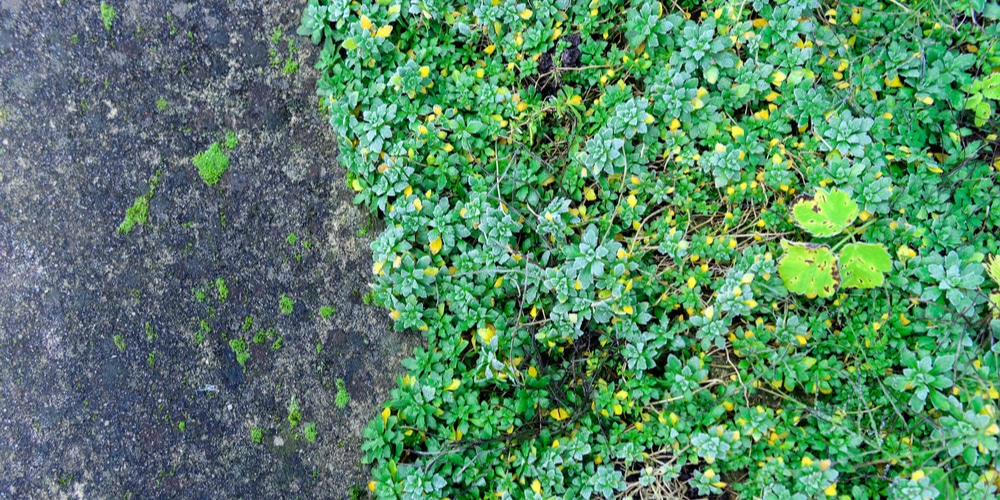Do you need to spice up your garden with an easy-to-grow perennial that will come back every season (if you provide it with adequate care)? If you are looking for a low-growing ground cover, there might not be a better choice than creeping phlox. If you wonder “how far apart to plant creeping phlox,” you are in the right place.
While the plant doesn’t require much attention from your side once it establishes itself in the soil, you will have to recreate the ideal conditions for its growth to ensure it thrives in your garden.
And to avoid the spread of diseases, you must ensure adequate airflow.
In this essential guide, you’ll learn everything you must know about planting this species and growing it.
How Far Apart Should You Plant Creeping Phlox?
Creeping phlox doesn’t require much attention from your side to grow. However, to get the most out of it and allow it to spread and create the gorgeous colorful waterfall effect, you must space your plants adequately.
If you are planting more than one creeping phlox, you should space your specimens at least two feet apart. After all, as its name suggests, creeping phlox tends to spread heavily in width.
Keep in mind that a suitable space will encourage healthy growth and minimize the risk of powdery mildew. Indeed, while creeping phlox is a plant resistant to most diseases and attacks from pests, it is susceptible to this fungal infection.
Take the necessary measures to prevent its appearance and spread, especially if you live in a hot and humid region.
Also, consider adding a thick layer of mulch to regulate the soil temperature and protect your plant from thermal shock and excessive dryness. But what more should you know about growing creeping phlox?
Jump to the following sections to explore some of our favorite tips!
Growing Creeping Phlox: Our Tips
You can grow creeping phlox from seeds, transplants, and cuttings. If you are growing your plants from seeds, don’t forget to use a well-draining potting mix. Creeping phlox loves moisture but won’t stand wet roots. The ideal mixture includes perlite and sand granules.
Mulch can also help to increase drainage. And don’t forget to tilt the soil to reduce compaction. To allow your plants adequate time to establish themselves in the ground, plant your seeds about two months before the last frost date.
Also, ensure to provide them with enough sunlight, especially during the growing phase. If you live in a cold region, the more, the better. Otherwise, the morning sun will be more than enough.
Growing creeping phlox from transplants or cuttings will be much easier than doing the same through seeds. Because of its popularity, you won’t have problems finding this phlox plant at your local nursery.
Under optimal growing conditions, creeping phlox takes a couple of years to reach maturity. You can expect it to grow at an average rate of about one inch per month.
While this plant usually doesn’t grow taller than 6 inches, it can spread as much as two feet wide, so you need to provide these plants with adequate space!
Creeping Phlox Care
Maintaining your creeping phlox healthy isn’t much of a challenge if you know what it needs to thrive.
Besides ensuring adequate drainage, you must also take some steps to ensure your plant receives all the nutrients it needs to grow. Consider adding a layer of compost or manure around your plants.
Fertilizer isn’t a must, but it will encourage growth. Purchase a high-quality and slow-release product, better if organic. Avoid overfeeding your plants: too much nutrition might burn them or halt their growth. Usually, a layer of compost will be more than enough.
Also, don’t forget to trim your plants after the blooming season: it will encourage new growth and give your more flowers the following year. Creeping phlox is a perennial, meaning that with proper care, you’ll be able to enjoy this plant for several years.
How far apart to plant creeping phlox: Conclusion
You will need to water your plants regularly when you plant them. After that, creeping phlox doesn’t require much water.
If you live in a region where rainfall is regular, you might not have to add any extra moisture. Don’t forget that phlox is drought tolerant but will not survive in water-logged soils.
Related Article: Creeping Phlox in Winter

